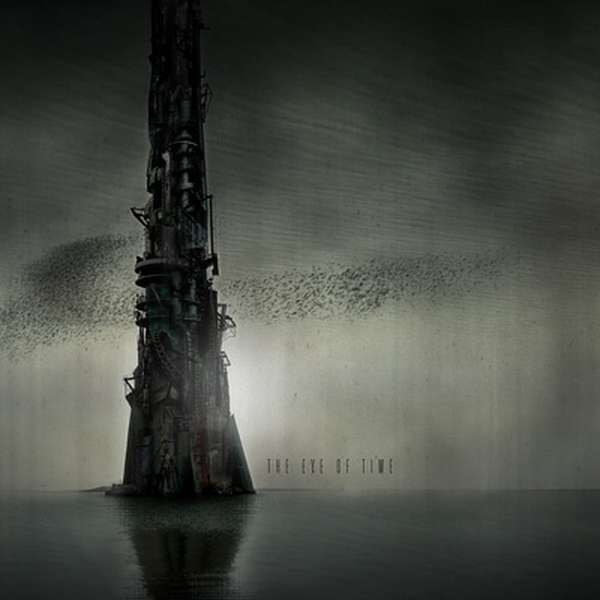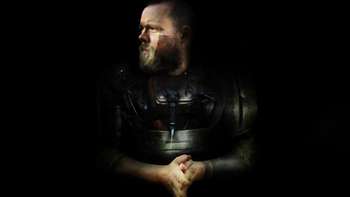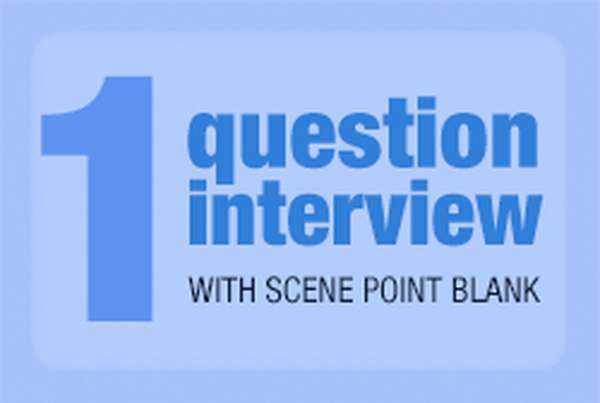The first thing that hits you is how beautiful the album looks. You haven't even begun to listen to it and already you're fawning over the beautiful cover art. It only gets more enthralling as you open it up and revel in the stunning beauty of Thomas Hack's artwork. As you take your time flipping through the massive booklet of accompanying art, you notice how intricately detailed, how purposeful every part of these images are--especially the parts that aren't there. The most striking thing about them is how much is left out, or, rather, how little is allowed into each piece, and their direct simplicity creates an unnerving sense of penetrating pointedness.
You finally break away from the irresistible allure of the art to lift out the first disc, labelled only as After Us. At first, you hear nothing. But then, you hear the clocks, the chimes, the incessant ticking; quickly paced, deliberate. Then the strings enter, swelling, growing inexorably. This moment will stand out in your mind as the time where you finally began to understand the enormity of the project you undertook in listening to this work of art. As the introduction fades out, having stated its peace and taking its leave, the strings again swell and reenter. But this time, something is distinctly off. You notice that they start and stop incorrectly; you get a sense that something has gone terribly wrong. Then the drums enter, framing, structuring, driving the lackadaisical strings, and grow, and grow, and grow further. The guitars enter, ever so unassumingly, content to stick to the shadows of the background (one of the few things that do). This movement is called "I Hate Your Fucking Eyes". You suddenly feel the incredible sadness and pain behind the music, expressed so forcefully and honestly, without even the smallest effort to spare you its wrath. You didn't know quite what you were going to listen to when you first put in this album, but you knew it would be brutal. Just maybe not quite this brutal.
Of course, it does not end there. The rest of the first piece, After Us, the entire first disc, plays in much the same way. You're willingly drawn along for the softness, the rancour; the elated, the dysphoric; the organs, premonitory in their graveness; the lack of vocals, leaving a vacuity without release; the slow drone as the songs gather their own presence, bringing you, allowing you to experience their pain, in their own time. Though it comes early on in the hour-long piece, the titular track "After Us" is the clear emotional highlight. From the amelodic, buzzing opening notes and the painful, despairing wails to the crisp static drones and the thunderously spacious percussion, everything about this track is perfect, designed to leave you drained and open for more. It'll fool you at times; "What Am I Less? What Took the Road?" lulls you into a false sense of soft, contemplative security with its soft piano lead and ghostly whispers. But that moment is quickly gone as the chilling screeches of "Away and Lost, I Cry the Error" begin, sounding like a lone signal traveling through the icy blackness of space. It definitely carries heavy elements of Igorrr--the clear emphasis and love for classical performance driven by heavy sentiments towards electronic music and ferocious rhythms. It's not until the outro finally ends, briefly reprising the introduction while slowly fading out, that you're given a moment's respite, a chance for catharsis, time to reflect on all you have just experienced. And even then, that moment is only given for you to put in the second disc.
You're shocked as the second piece, Jail starts off in complete contrast to the first disc, featuring an incredibly upbeat drum line. Perhaps, you think, this will be different; perhaps this piece will be more forgiving, inviting, and soothing. Of course, the moment the melody finally enters, any hope of ease is erased--the haunting opening motifs of "Let's Party to the Death's Birthday!" paint only a cruel facsimile of happiness, literally mocking you with hyena-like laughter. You hope to find solace in the static nature of the piece, yet its frequent, random rhythmic variation deprives you of that sole lifeline. It sees your need for something easy to grasp onto and merely gives you the finger. The derisory clapping and lone gunshot that show out the song only solidify its hostility and open mocking of your need for elation.
And the rest of the piece proceeds in kind, presenting you with small glimpses of happy release and twisting them beyond recognition, past revulsion and into repulsion. The guttural screams of "Time Has Come" only begin to scratch the surface of the emotion forced upon you, the trashy industrial drumming only augmenting its nonchalance. But by the time you hear the opening dirge-like funeral march of "Comfort, Design and Graves", you know exactly what is coming. You allow yourself to be dragged along with the sombre violin, the remorseful wails, and the disturbingly disconnected dialogue. The highlight of this piece, "The Distance Between You and the Rest", only drives home your isolation, the delicate interplay between percussion and guitar giving the impression of an intimate, private performance--one on which you are intruding. By the time you get to the coda "00007091981151723031994", you are at your wits' end. You need something soothing, uplifting, and you need it fast.
Forgivingly, the album ends with the lighter, even almost happy, piece, Lily on the Valley. For the first time, it almost makes you feel welcome. "Begin, Wait, Watch, Play" sounds as if it beckons you to reflect on the one hundred minutes not with despair, but with fresher, stronger eyes, inviting you to take your turmoil and strengthen your resolve. The enjoyable arpeggiated melodies of "Use Your Wings For What They Are" build you up with a sense of élan, the furious Venetian Snares-like drumming seeming, for the first time, to be a source of strength. It delivers you the relief you've been seeking this entire time, but at enormous cost.
The entire album reminds heavily of Uneven Structure's debut Februus--it's large in scope, cold and abrasively hostile, and absolutely draining to listen to. Yet it is executed with much more proficiency, subtlety, and finesse that the comparison seems almost insulting to make. It's truly a musically sublime experience, something not said lightly. You will feel insignificant by the time you are done with this album. And, by then, you'll welcome it.





